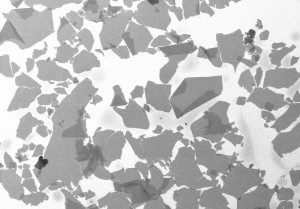Graphene Oxide
Graphene Oxide
We will soon retrieve data from a broken device, thanks to graphene oxide’s refractive index and fluorescence that can be manipulated.
A new material promises the possibility of recovering data even from a broken device. Graphene, the ‘wonderful material’ has unique properties that include; unmatched strength, flexibility, lightness, conductivity, and transparency. These properties make graphene to next big thing that will spearhead the next generation of gadgetry design. Graphene oxide has the same characteristics, but its refractive index and fluorescence properties, which can be manipulated, make it special in making media that guarantee your data security.
Holographic storage of data has been the talk in science for a while now but graphene oxide has made it almost real. Researchers increased the oxide’s refractive index by between ten to hundred times. They also decreased the oxide’s fluorescence to make it ideal for bioimaging and multimode optical recording. This large refractive index means that data storage can be merged with holography. This would not only ensure that the data is securely coded but also that it is easily retrievable even from a broken device.
Most companies spend a lot of resources hiring the services of data centres or establishing one. These data centres spend a lot of money replicating information several times over (back up, disaster recovery snapshot, live copy, e. t. c). The commercial realization of this graphene oxide-based holographic storage of data will save a lot of resources that go into managing data in anticipation of loss.
The discs that are currently in use today store information in binary form. If the disc breaks, it will result in automatic data loss. This, however, will no longer be the case since the new technology means that a super-disc can be made that enables data to be retrieved even from broken discs thus saving the data centres the trouble of physically duplicating data to avoid data loss.


Leave a Reply